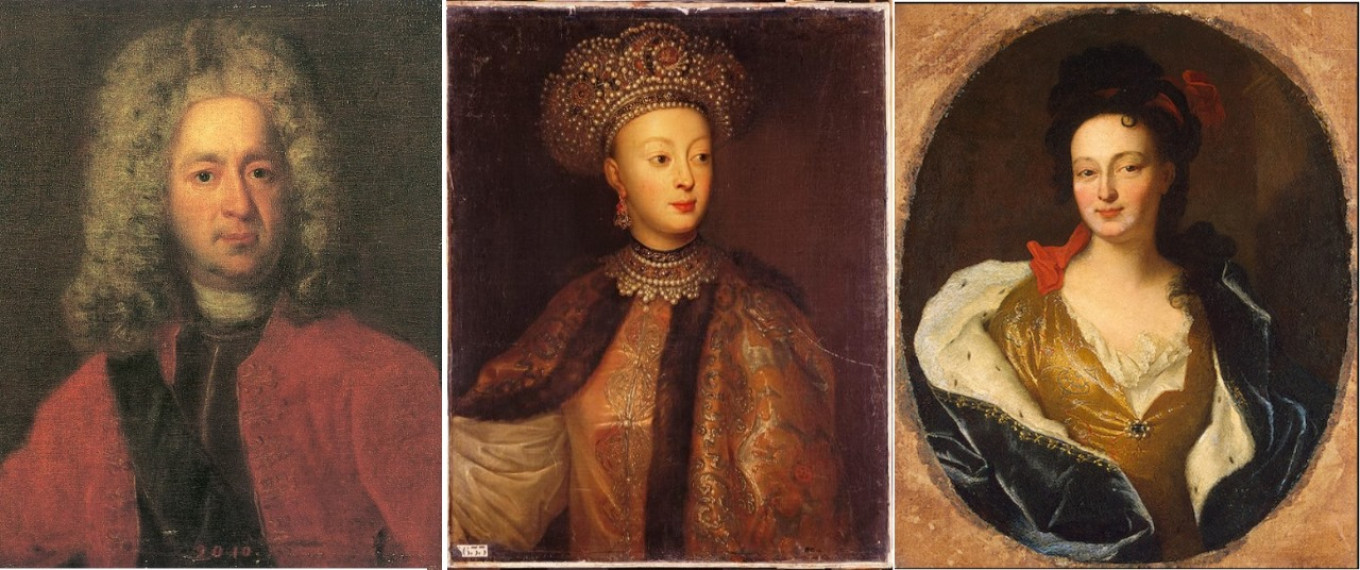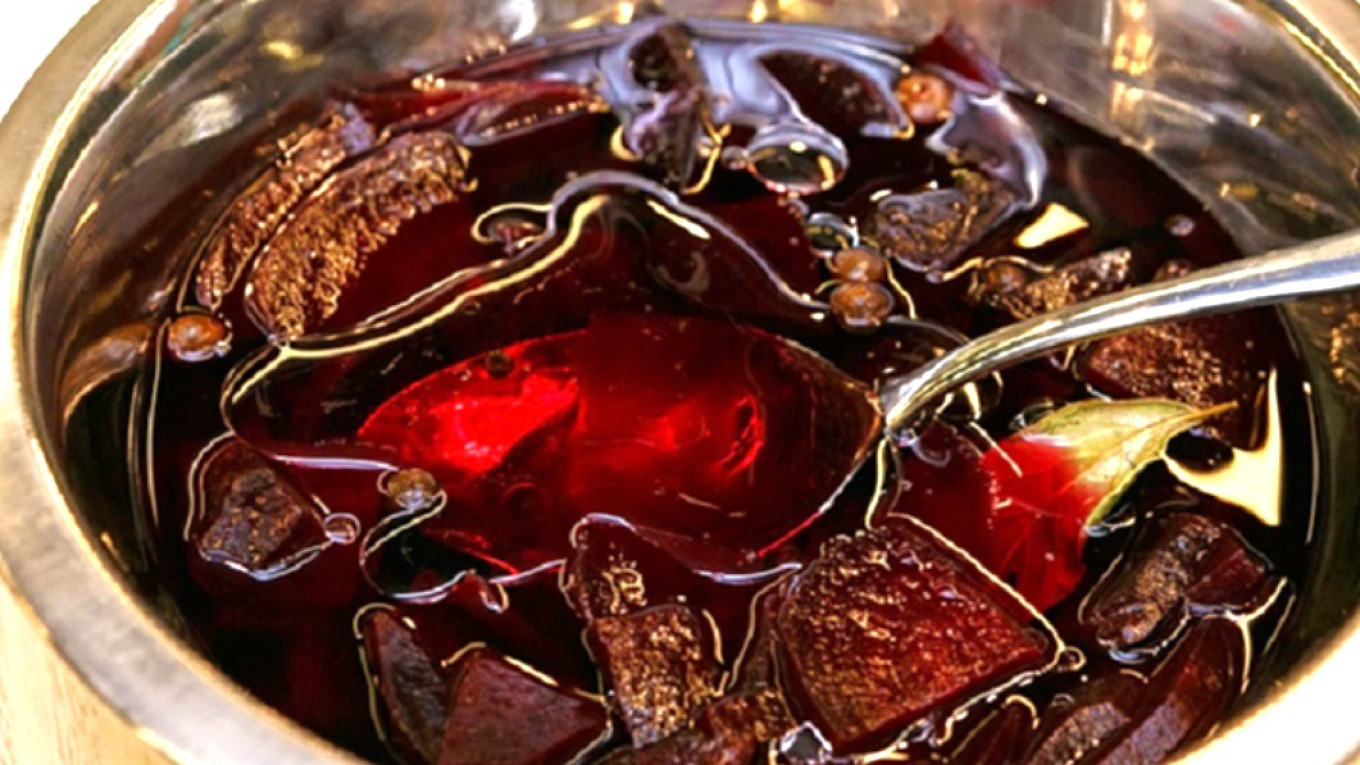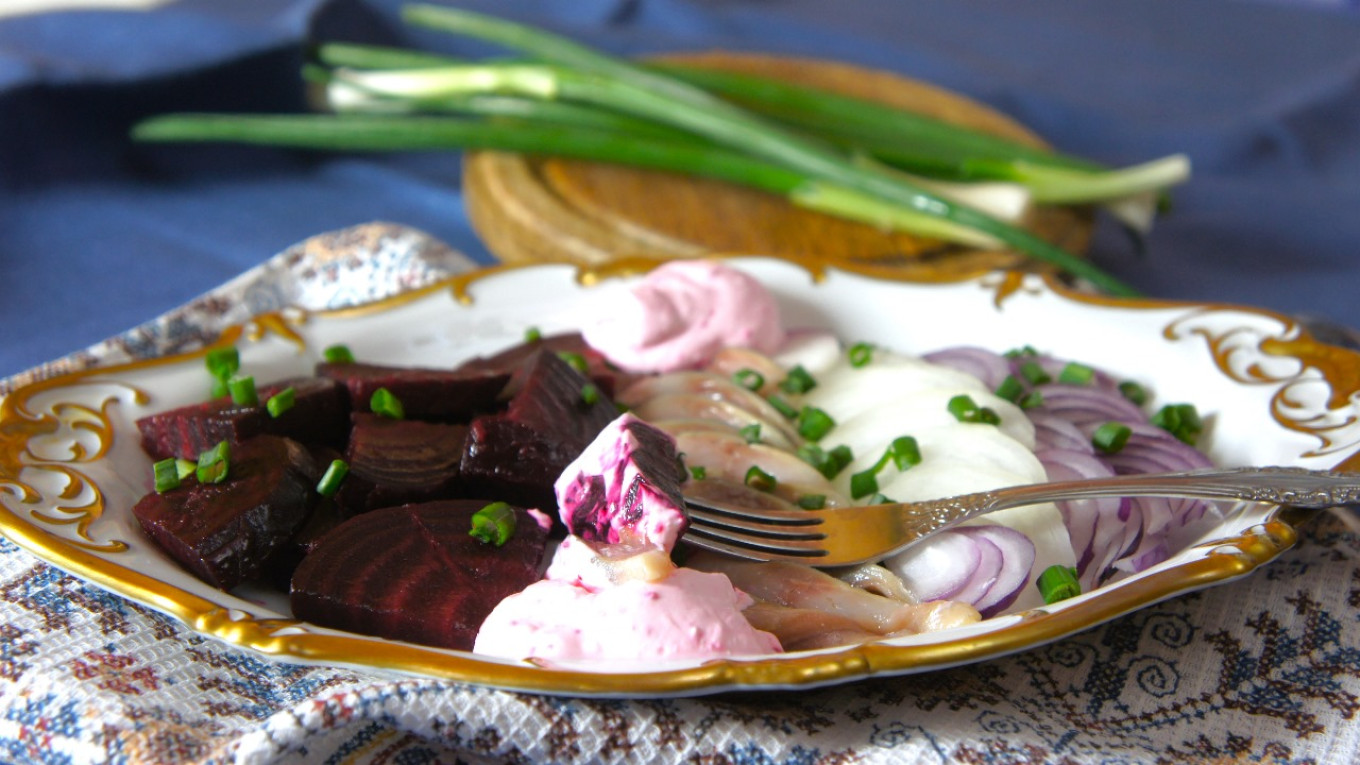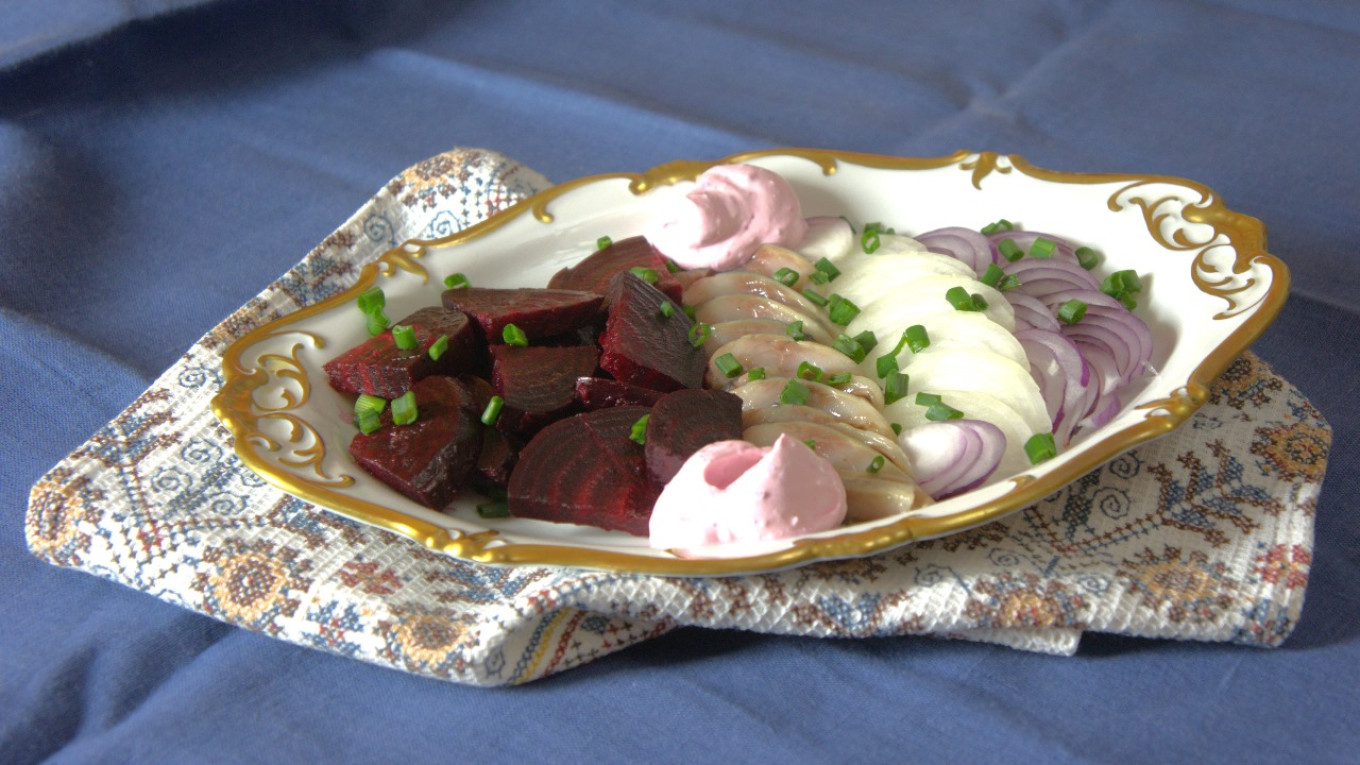Paint your cheeks with beet juice? Every Soviet child laughed at ugly Marfushka with huge beet-red circles on her cheeks in the 1964 movie "Morozko." Although the fairy tale was a lie, there was an ounce of truth in the image. Five hundred years ago the faces of Russian women were plastered with make-up so thick that today’s fashionistas would not believe it.
"Women painted their cheeks, lips, chin and eyebrows so thickly that they looked revolting,” wrote the famous ethnographer Alexander Tereshchenko (1806-1865) about Russian life before the 17th century. “The fairer sex loved to use rouge, and if a husband wouldn’t buy his wife white face paint, it meant that he didn’t love her.”
But where did style this come from? There is nothing to indicate that these kinds of cosmetics were used in ancient Russia. It must be that pernicious foreign influence that patriots today are constantly going on about. But all that was “good and holy” in Russia was not destroyed by the terrible French or Poles. This kind of heavily made-up face is a legacy of the Mongols, who didn’t invent it but adopted it from China and the East. Given Russia's current "turn to the East," soon this standard of female beauty will be recognized as deeply patriotic and truly authentic.

Of course, women have colored their lips and cheeks for centuries. Many centuries ago the Egyptians used red ochre — a natural mixture of iron oxides and clay. They often colored their nails and hair with henna. In Mesopotamia they used asafetida, a gum extracted from the ferula plant. Chinese women's makeup required perfectly white skin. This standard of beauty probably came to Russia via the Mongols.
For some reason Russian women, who were raised in austerity and brought up to be reserved, found an outlet for their creativity and sense of beauty in these cosmetics. They whitened their skin, painted their cheeks and blackened their eyebrows. Rich women usually put a lead-based white paint on their faces. In villages women of lesser means — Nastenka and Marfushka — made do with simple wheat flour, stearin candles and other improvised materials.

First women rubbed their faces with spongilla (a kind of freshwater sponge), dried roots, fresh berries of lily of the valley, or tincture of red sandalwood. For rouge poor women used evaporated beet juice. They would apply the rouge over the entire cheek, or sometimes painted it on in the shape of circles, stripes or rhombuses.
They would draw on eyebrows with antimony or ordinary coal from the stove. The technique of makeup itself was peculiar. Whitewash covered the face in a thick layer so that it resembled a mask. Eyebrows were drawn on like sable tails, that is, very wide and long. Merchant wives in the early 19th century painted their teeth black, which was considered an ideal of beauty.

Contemporaries noted that a rich woman used half a pood (8 kg) of rouge, whitewash and other cosmetics every year. By the way, male visitors often put on rouge when they were to meet with a woman, "because this proved his respect for her," writes historian Alexander Tereshchenko. And according to Antonio Possevino, a papal legate who visited Moscow in 1580, rich and noble women were in the habit of wearing three dresses, one on top of the other. "A woman wearing only one dress was unseemly and dishonorable."
In Russian high society, the tradition of putting on such abundant cosmetics gradually went out of style during the reign of Peter the Great. Frenchman Foy de la Neuville in his "Notes on Moscovia" (Relation curieuse et nouvelle de Moscovie, 1698) recalled that Anna Stepanovna, the wife of Peter the Great's friend Andrei Matveyev, is "the only woman in this country who does not use whitewash and rouge, so she is quite good looking."

It is worth adding here that this family was very enlightened and secular. Even after the death of his first wife Anna, Matveyev became ambassador to Holland and carried out diplomatic assignments for Peter the Great in England and France. He was rightfully considered a bright representative of the "Westerners" among the Russian nobility.
And as Russia took on a more European mien, Russian women also gradually moved away from the Eastern aesthetic and moved towards today’s ideals of beauty.
But beet juice was still used as a rouge for a long time.
Brightly colored beets attract attention on the table, too, and they are particularly delicious when their sweetness is combined with a sharp flavor, as in this recipe for an appetizer.
Herring with pickled beets and sour cream-horseradish sauce
Ingredients (for 10 servings)
- 500 g (generous 1 lb) medium-sized beets
- 1 red onion
- 250 ml (1 cup) water for marinade
- 100 ml (scant ½ c) 6% vinegar
- 1 tsp salt
- 100 g (1/2 c) sugar
- 50 ml (3 Tbsp and 1 tsp) vegetable oil
- 2 bay leaves
- 8-10 black peppercorns
- 3-5 allspice berries
- 1-2 cloves
Instructions
Cook the beets
Method #1: Boiling
- Put the beets in a pot and cover completely with water.
- Bring to a boil, reduce heat and simmer for 40 min. Cool.
Method #2: Baking
- Preheat the oven to 180°C / 355°F
- Wrap the beets in foil.
- Put the beets on a baking tray and place in the oven for 45-50 minutes (until ready). You can check the cooking by pricking with a fork or knife; the beets should be soft. Cool.
Marinade
- Peel onion, cut into thin rings.
- Mix water, vinegar, sugar, salt, vegetable oil.
- Add bay leaves and both kinds of pepper.
- Heat over medium heat, stirring, until salt and sugar dissolve. Cool slightly.
- Peel the cool beets and cut into quarters and then thin slices. Put them in a glass jar.
- Add chopped onions and cover with the marinade.
- Leave to marinate for 1 day.

For the appetizer, you can buy a ready-made cleaned fillet of lightly salted herring. Or you can choose a whole herring and clean the fish yourself.
Sauce
Ingredients
- 200 g (3/4 c) 20% fat sour cream
- 2 Tbsp store-bought grated horseradish
- salt and ground black pepper to taste
- 2 slices of pickled beets
Instructions
- Blend the sour cream, horseradish and beets with a blender. Add salt and ground black pepper to taste.
Plate the appetizer
Ingredients
- 200 g (7 oz) pickled beet
- 1 lightly salted herring
- 1 red or yellow onion
- sauce
Instructions
- Cut herring into small slices.
- Peel the onion, cut into rings.
- Place beets, herring and onions on a dish. Pour the sauce over the top of the dish or serve alongside.

A Message from The Moscow Times:
Dear readers,
We are facing unprecedented challenges. Russia's Prosecutor General's Office has designated The Moscow Times as an "undesirable" organization, criminalizing our work and putting our staff at risk of prosecution. This follows our earlier unjust labeling as a "foreign agent."
These actions are direct attempts to silence independent journalism in Russia. The authorities claim our work "discredits the decisions of the Russian leadership." We see things differently: we strive to provide accurate, unbiased reporting on Russia.
We, the journalists of The Moscow Times, refuse to be silenced. But to continue our work, we need your help.
Your support, no matter how small, makes a world of difference. If you can, please support us monthly starting from just $2. It's quick to set up, and every contribution makes a significant impact.
By supporting The Moscow Times, you're defending open, independent journalism in the face of repression. Thank you for standing with us.
Remind me later.







